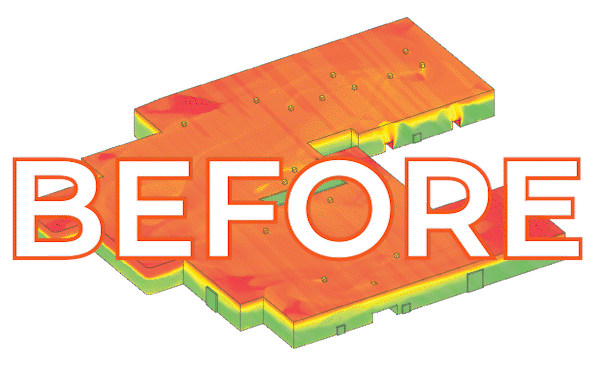6 Signs That It’s Time to Upgrade Your Industrial Ventilation
Adequate industrial ventilation is vital to efficient operations and is required by many localities to ensure worker protection. Most modern industrial facilities utilize standard ventilation systems; however, these systems may not be robust enough to provide adequate airflow. Older buildings are also notorious for poor ventilation, resulting in property damage and higher worker turnover. Determining if your industrial ventilation could benefit from upgrades can be tricky, but the following six signs indicate that it is time to upgrade your industrial ventilation.
Condensation Accumulation
Musty smells, damp walls, dripping windows, falling insulation, and slippery floors all point to improper ventilation. Without adequate airflow, moisture becomes trapped in the hot air, accumulating on cooler surfaces. Over time, condensation accumulation can lead to property damage, mold and mildew, or even slip-and-fall injuries. Upgrading your industrial ventilation with more robust roof vents that allow greater air exchange will help draw the moisture out of the facility, protecting the building, equipment, and workers from the hazards of condensation.
Little to No Fresh Intake Air

Industrial facilities without proper ventilation often have insufficient supply air. As a result, they may have hot spots throughout the building, indicating that additional intake air is necessary to ensure comfortable conditions. Check all the building’s air intake louvers to make sure they are not blocked by vegetation or other obstructions outside. Next, check to see if any layout changes have blocked off incoming air. If all intakes are clear, you likely need to upgrade your system to ensure proper ventilation.
Unexplained Loss of Productivity
When workers are uncomfortable, either due to excessive heat or poor ventilation, productivity can take a hit. The human body can only labor so long in unpleasant conditions before slowing down and losing focus, leading to a drop in productivity and overall quality. If productivity issues can not be traced back to other sources, improving indoor working conditions through industrial ventilation upgrades can go a long way toward revitalizing efficiency and productivity.
Poor Indoor Air Quality
Indoor air quality and ventilation go hand in hand. Poorly ventilated buildings can’t circulate air, causing it to stagnate. This also allows pathogens to linger in enclosed areas, exposing workers to increased risks of illnesses. Stagnant air, coupled with moisture, can also lead to mold and mildew growth. This poor air quality can further compromise workers’ ability to perform their jobs optimally. Expertly designed industrial ventilation systems are the key to fixing poor indoor air quality.
Recent Changes to Equipment Layouts
Introducing new equipment or adjusting the layout can directly affect the building’s ventilation. Heat-producing processes, for example, should have extra ventilation in place to prevent dangerous heat build-up. Upgrading to automated manufacturing is another change that requires adjustments to ventilation. It is important to compensate for the additional heat generated by the electronic components. Even simply moving equipment around the shop floor can block air intake or cause heat to become trapped under non-ventilated roof areas.
The Building Was Constructed Before the Mid-90s
Awareness of the importance of industrial ventilation began to take off in the early 1900s. However, it wasn’t until the middle of the century that proper ventilation began becoming mandatory to protect workers’ safety. Buildings constructed before 1996 likely haven’t been retrofitted with upgraded systems and should be evaluated by ventilation experts for cost-effective upgrade solutions to bring the facility into compliance.
For over 60 years, Moffitt has proudly helped ensure comfortable working conditions through custom industrial ventilation solutions. Our solutions utilize the latest technology to help cool indoor environments by up to 30℉. Contact us today to learn more about how to upgrade your industrial ventilation and schedule your free site evaluation and ventilation system design.
